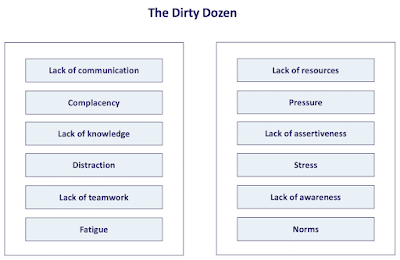Human Factors (HF)
What Is Human Factors?
Image sourced from Human Factors FAA, n.d.
In the past when aviation was first introduced, there were many accidents that occur due to a poor understanding of aviation which led to many accidents caused by mechanical failures. As time progressed, technology advanced and humans have a better understanding on aviation. This led to accidents caused by mechanical failures to occur much lesser as compared to accidents due to human factors. Human factors is a way to determine how humans can operate systems and services in aviation safely and efficiently without errors or mishaps (FAA, n.d.-c, p14-3). It is a common understanding that most aviation accidents happen due to human factors at roughly 80% as compared to mechanical failures (FAA, n.d.-c, p14-1). If situations are not arrested in time, it may lead to dire consequences. When discussing about human factors within the aviation industry, the first thing that comes to mind for many is the dirty dozen.
Human Factors At Work and How To Mitigate Them
Working in the aviation industry, workers - pilots and ground crews alike, are susceptible to human factors. Human factors are usually interlinked. One example is fatigue which may lead to workers being distracted, complacent, and even lull into norms. Most aviation workers work round the clock with shifts in place to mitigate on human factors. Nevertheless, fatigue is probably one of the most significant factor that contributes towards human factors. Being an aviation maintainer is no easy feat as aircrafts needs to be fixed and ready to go as soon as possible. This is why Crew Resource Management is very applicable not only for aircrews, but also for all ground crews. CRM is a form of decision making technique that employs all available resources efficiently to reduce accidents due to human errors (FAA, n.d.-a, p2-2). It is seldom that workers perform tasks alone in the aviation industry. Reason being, most jobs such as aircraft servicing require more than 1 person to execute it safely and efficiently. This is where teamwork and communication comes into play whereby it is the responsibility of workers to not fall into the trap of human factors. Having an additional worker can act as a form of CRM to help make decisions, look out for safety hazards, and many more. Supervisors do have to play their part by walking the ground ensuring that workers are on the ball when working and do not fall into the dirty dozen. In conclusion, being in the aviation industry has zero margin for error. Which is why, it is stressed upon that workers do their best to avoid accidents due to human factors.
References
FAA. (n.d.-a). Aeronautical Decision-Making. https://www.faa.gov/sites/faa.gov/files/regulations_policies/handbooks_manuals/aviation/phak/04_phak_ch2.pdf
FAA. (n.d.-b). Aviation accident [Graph]. FAA. https://www.faasafety.gov/files/gslac/courses/content/258/1097/AMT_Handbook_Addendum_Human_Factors.pdf
FAA. (n.d.-c). Human Factors. https://www.faasafety.gov/files/gslac/courses/content/258/1097/AMT_Handbook_Addendum_Human_Factors.pdf
Piscopo, V. C. (2021, February 15). Dirty dozen [Illustration]. DMD Solutions. https://dmd.solutions/blog/2021/02/15/what-are-the-dirty-dozen-factors-that-may-lead-to-catastrophic-consequences-in-aviation/





Comments
Post a Comment